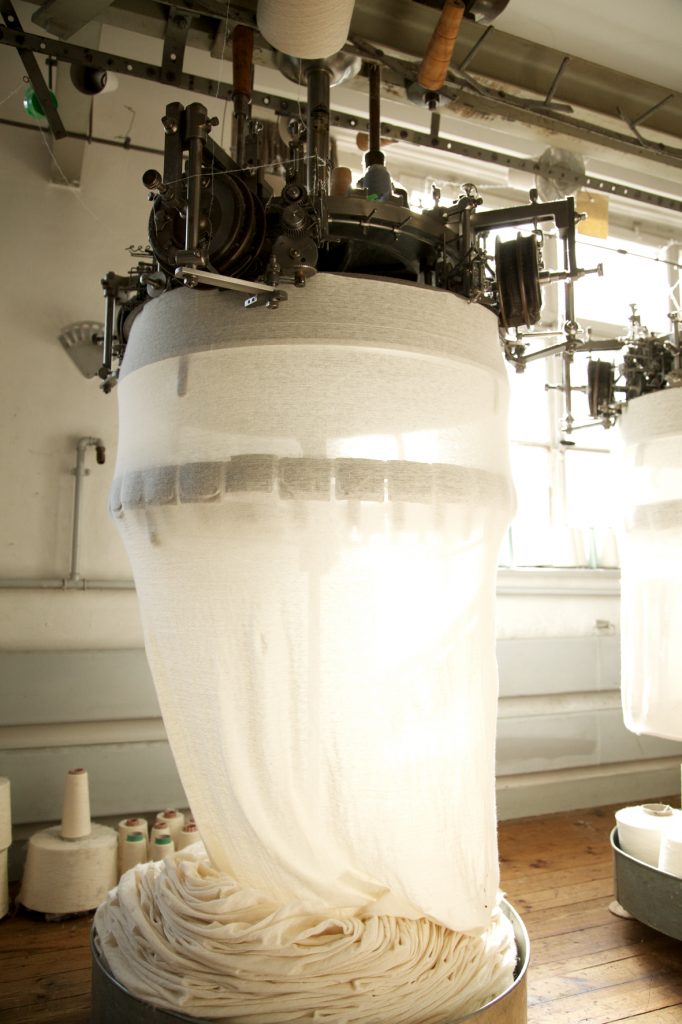
Our Brand Spotlights are where we share the stories of the people behind the brands that we carry. More than just buying a product, we want the Withered Fig experience to be deeper in purpose and meaning. We want you to know the people behind the brands that have made this their living. It is the men and women, from the top to the bottom, the owners, the designers, the cutters and sewers, that encompass everything that each brand is. As such, we hope that the stories we share will not only help you learn a little more about what makes each brand unique, but also encourages you to pursue your passions as well.
INTRO
Merz b. Schwanen in its current form is not that old. But behind the current brand is a long history dating back to 1911. Starting in 2011, Peter and Gitta Plotnicki introduced the first line of the contemporary Merz b. Schwanen line at the Bread and Butter trade show in Berlin, Germany and have gone through many iterations of their knits to bring to realization the current popular knits – 1950s tees, 206 henleys, 207 short-sleeve henleys – in their current format. Keeping with the original Merz family name, Peter and Gitta have sought to honor the history of the original company in their business approach and clothing designs, while seeking to find their fit in the modern day industry. We love Merz b. Schwanen’s knits, not just because of the loopwheel fabric’s quality and unique hand, but also because of the passion they have for what they do. We had the opportunity in late 2018 to visit Merz b. Schwanen at their office in Berlin, Germany where they shared a little more details about their history, the intricacies of loopwheel manufacturing, and how it is to operate a business as a husband and wife.
For this Merz b. Schwanen Interview, we had the honor of sitting down with Peter Plotnicki [P], Owner and CEO, Gitta Plotnicki [G], Co-owner and Creative Director, and Mona Weber, head of Merz’s marketing and communication.
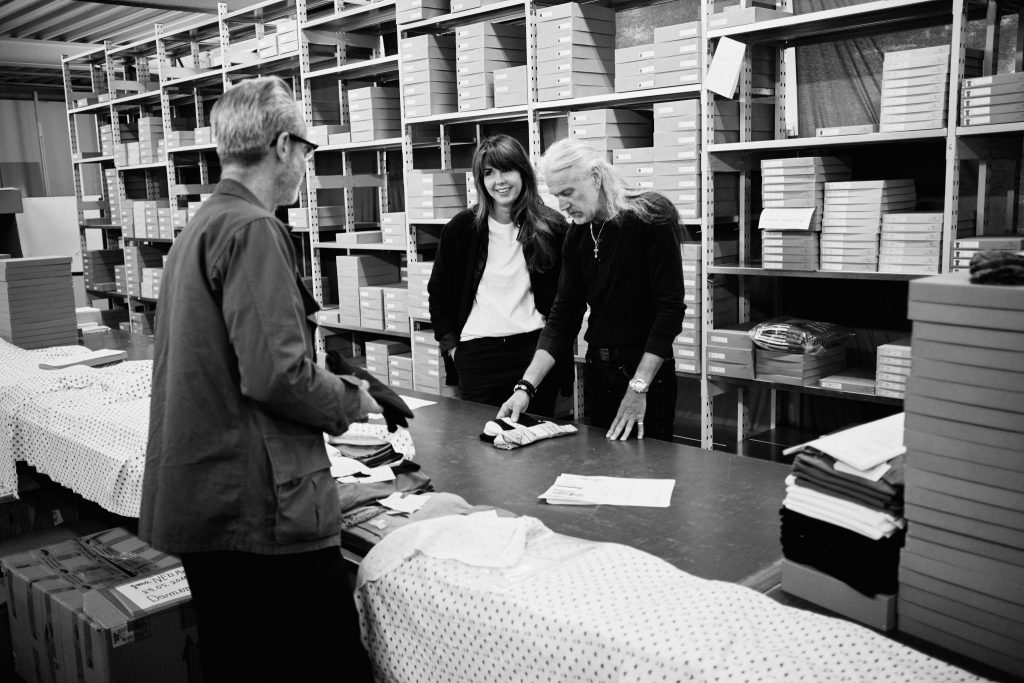
ORIGINS
How did you uncover the original Merz factory in the Swabian Alps? Was it hard to find the textile manufacturer, Rudolf Loder?
P: It wasn’t hard to find Rudolf. Back in 2010, the guy who sold the henley at the flea market bought all his vintage stuff from Rudolf Loder, and he told me about Rudolf Loder and where to find him. He also mentioned that the original factory still had a couple of loopwheelers, but the guy at the flea market didn’t know they were loopwheelers – just that they were old machines. Three weeks later I was sitting on a plane, heading to Stuttgart to see Rudolf Loder and the factory. It was so clear that we had to follow the way vintage henleys were made that I had to make our way back to its origin.
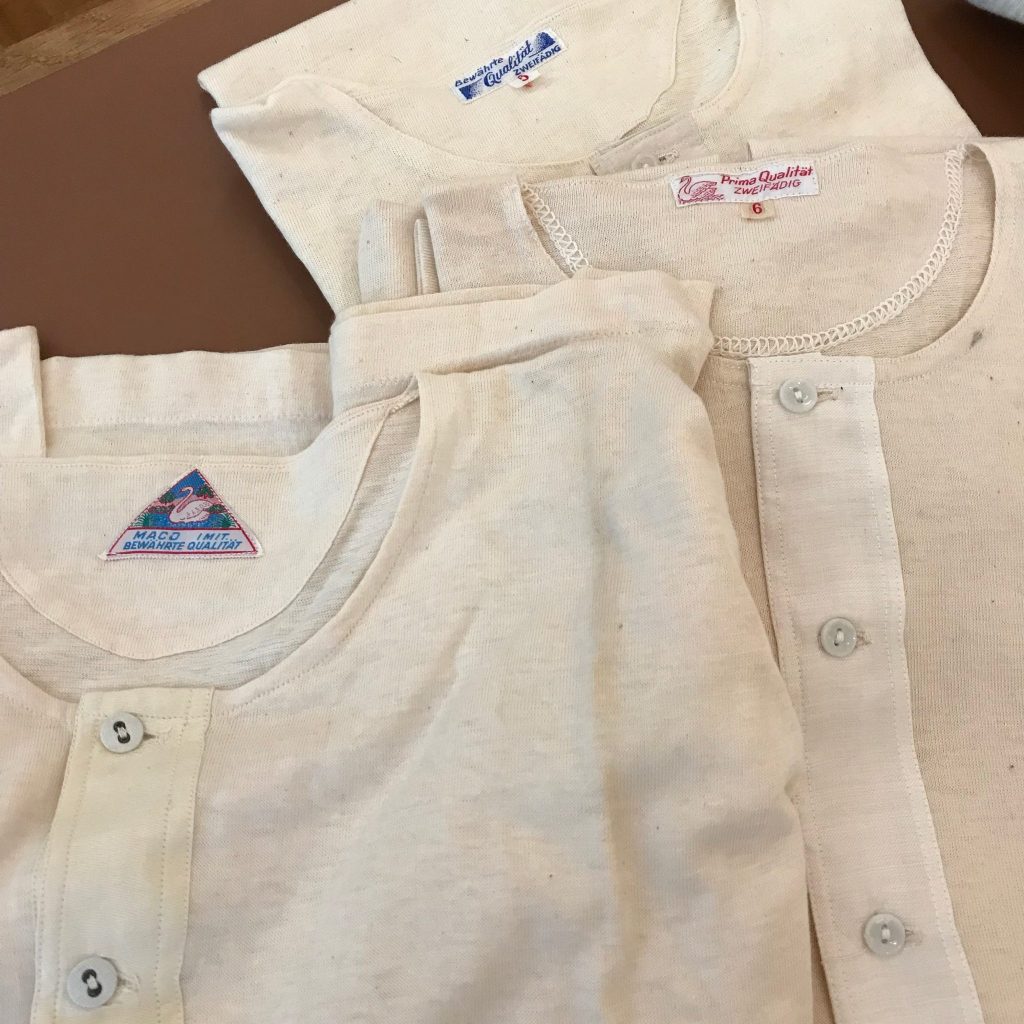
Were you pursuing other designs at the time?
P: We owned a brand called Mastersmith. The story behind the brand was based on a busy person traveling around the world in the 1920-30s by way of different transportation such as boats and cars. We were developing prints for t-shirts, but the supplier had a family issue so he could no longer produce samples for us to use at the upcoming Bread & Butter tradeshow; instead, we showed the vintage shirts from the flea market to give buyers a general impression of what might be our next collection. It was only three months between when we found the vintage shirts at the flea market and the tradeshow. During this period, Rudolf expressed interest in starting this project to develop the fabric, patterns, and styles that would ultimately become Merz b. Schwanen. In January 2011, we showed the first collection of Merz b. Schwanen at Bread & Butter.
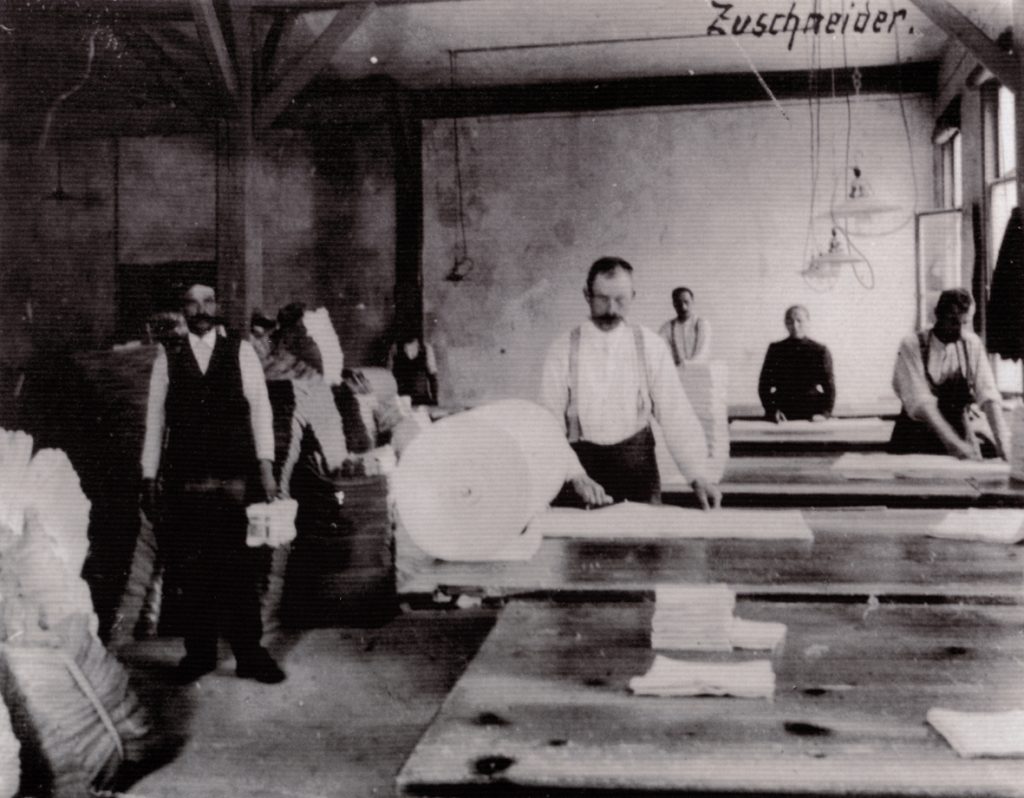
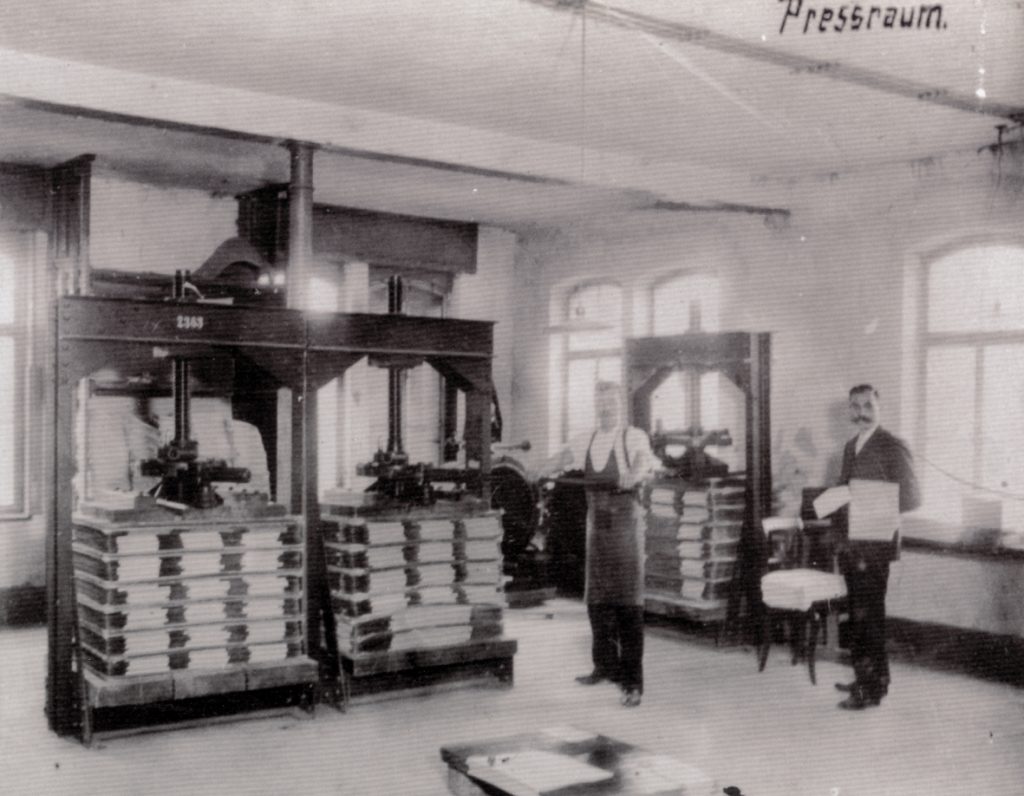
How did you arrive at using the original Merz family name for the business?
P: We thought of different names back then, but we thought for this kind of product it must bear a family name as the Merz family did in the past. We actually thought of using my own family name – Plotnicki – but as we thought about it, it became apparent it was quite a complicated name. Eventually, the descendants of Balthasar heard of our efforts to revive the loopwheeler factory, so they offered us their name. They had already stopped the business, so it was an opportunity to bring the name back to life. It’s the best name we can ever have as we inherited 100 years of history. Later, after discussing with the family how we came about this project, we found out that vintage tee from the flea market was an original Merz b. Schwanen shirt made around the 1910s.
P: As we later found out, the original label with the family name was created with the intention to highlight its quality, and so you wouldn’t find any vintage Merz shirts with the actual Merz name on their shirts. We have indeed gone full circle by having the Merz family giving us the brand name.
What was your initial design approach?
P: The starting point was definitely the fabric and the possibility that we could make this fabric on an original loopwheler. From there, we then decided what kind of products we could make. The design was definitely inspired by the vintage shirt, but we didn’t want to make a one-to-one replica, as the fitting was not good from today’s standpoint. If you try the original shirt, you’ll find pleats everywhere. People were shorter and thinner a hundred years ago, and the movements allowed in the arm were limited. At that time, the focus was on minimizing the amount of fabric being used to avoid waste, as it was more of an economic perspective since materials were much more expensive at the time. Therefore, we tried to find a balance between how it was in the past and how it needs to be today. Our first edition was still too oriented toward the original patterns, but since then we have gone through several iterations and prototypes. We keep changing things to make it fit better.
P: The way it is being made is also very dependent on the temperature; sometimes it gets hot and the fabric becomes too dense, so we’ll have to stop and adjust. It is very challenging as we have to come up with designs that could be made by loopwheelers. The machines are just like human beings, they function differently in each season, and they take a couple of hours each morning to work well. To this day, this is still our biggest challenge in the production process. Customers want stability in sizing and they expect the shirt size to be the same as their previous one. It took some time for us to realize how complicated production is and how hard it can be to have one production run be exactly the same as the one before. We only learned this once we started our online store because we previously weren’t able to get feedback directly from the customers.
G: This remains our daily challenge. Sometimes the stretchability also depends on the color. For example, black dye goes into the yarn and that makes it thicker, so when you touch the same shirt in both black and white, you might feel it’s different. The nice thing about textile is that it is organic. Like growing produce, cotton is something that lives and is perhaps lost in our daily conscience, but here we have these machines that have its own way of living and its own personality.
MATERIAL AND MANUFACTURING
How do you find the balance between having a product that is unique, yet consistent enough to help frame expectations?
P: Most of the times the production control works. But for example, if someone buys a size 5 that fits, but their next purchase it fits differently, while each piece is unique in this regard, at the end of the day the shirt has to fit as it is not a piece of art. A lot of our customers came from the denim side of things, and I think they are more educated in a way that leads them to be more interested in the process of making a product and its personality. For example, if you wash selvedge denim, it may have some kind of twist or fading. Our products are the same, it might go towards a certain direction after a wash but turns back straight after a couple washes. In general our customers have more understanding of our products due to their familiarity with selvedge denim.
How long does it take to produce a 1950s tee?
P: It takes around 20 minutes to knit the single-thread fabric of 1950s. For two-thread fabric, it usually takes 30 minutes or even 40; and this is just for the fabric – it does not include the time to cut and sew. By comparison, a modern machine might only take 1-2 minutes.
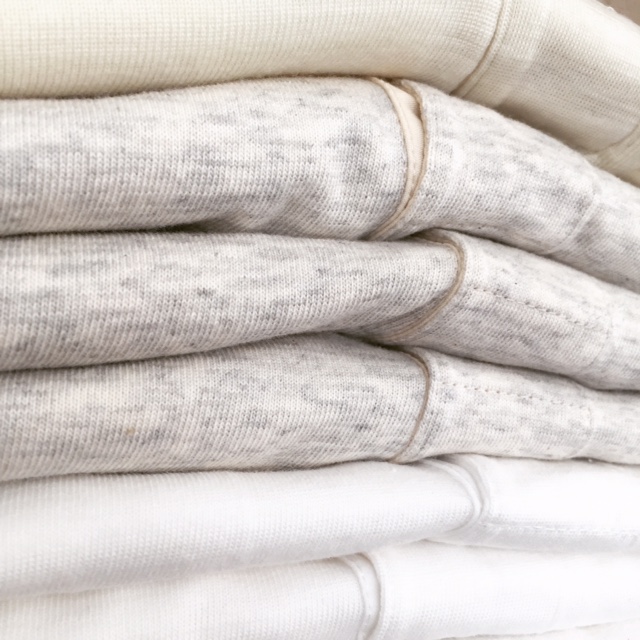
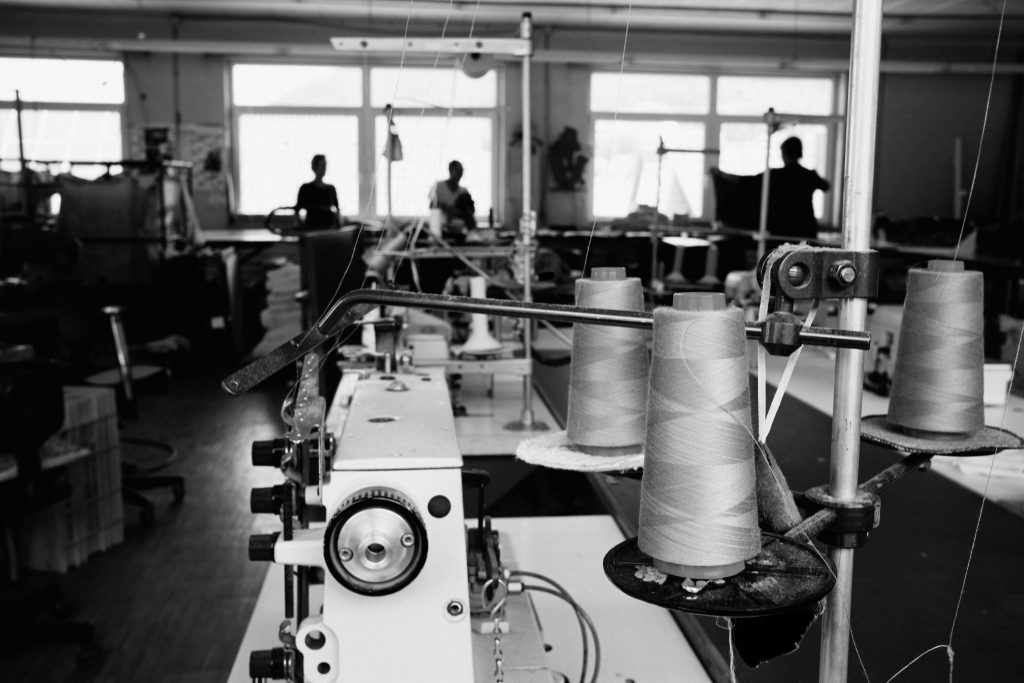
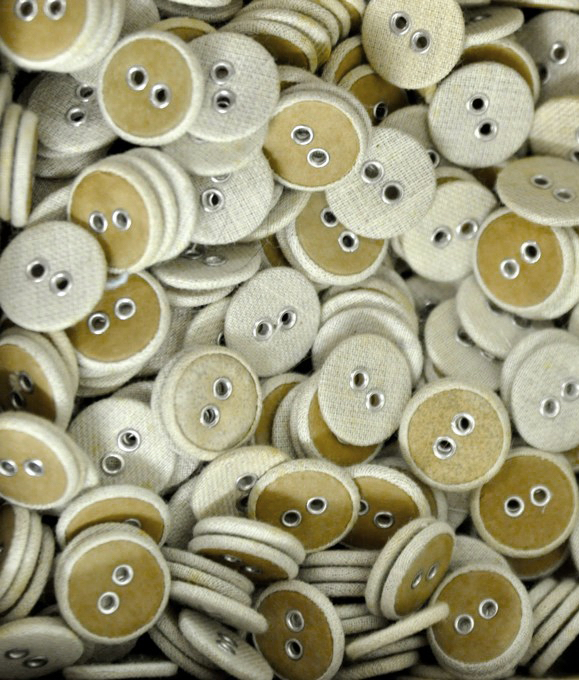
How do you meet the demand given such limited capacity and ensure production is running as intended?
P: We have around 35 loopwheelers that are either too small, too big, or not suitable for the fabrics we are making. However, we have a total of 90 loopwheelers in working order, but only use about 40 loopwheelers; the remaining loopwheelers are set aside as replacements in case the working ones are broken. Peter goes to the factory pretty often. Michael, who studies Textile Engineering and spent four years in production, is also frequently at the factory and helps ensure everything works as intended. We also communicate with the factory every day via telephone to know what’s going on.
What sets Merz apart from other knits? For example, some Japanese brands are also trying to revive loopwheeler-made products.
G: I think it’s the design approach that sets us apart. Also, the origins of loopwheeler shirts, machines, and techniques were invented here in Germany. The machine that they [Japanese] use is slightly different, so the materials are also slightly different. I think it’s just like how sometimes you wear raw denim but at the same time you might also own washed denim. People are in a different mood every day, and just like that, I see all brands and products are good.
P: As far as I know, Japanese products are very focused on heritage and being authentic, but we move a bit forward to give traditional products a more contemporary touch.
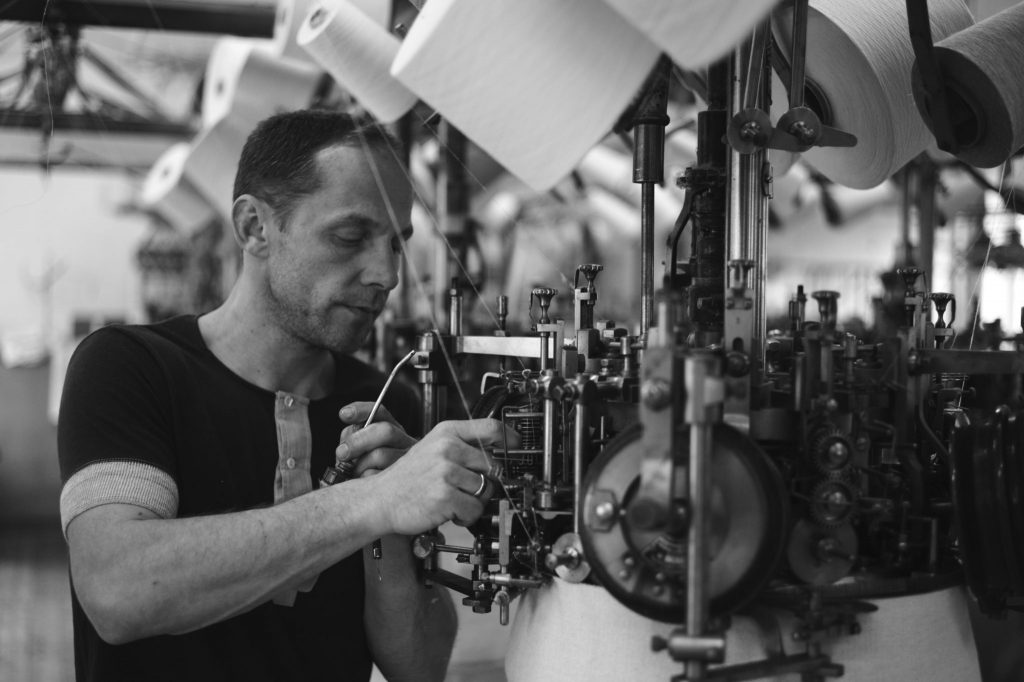
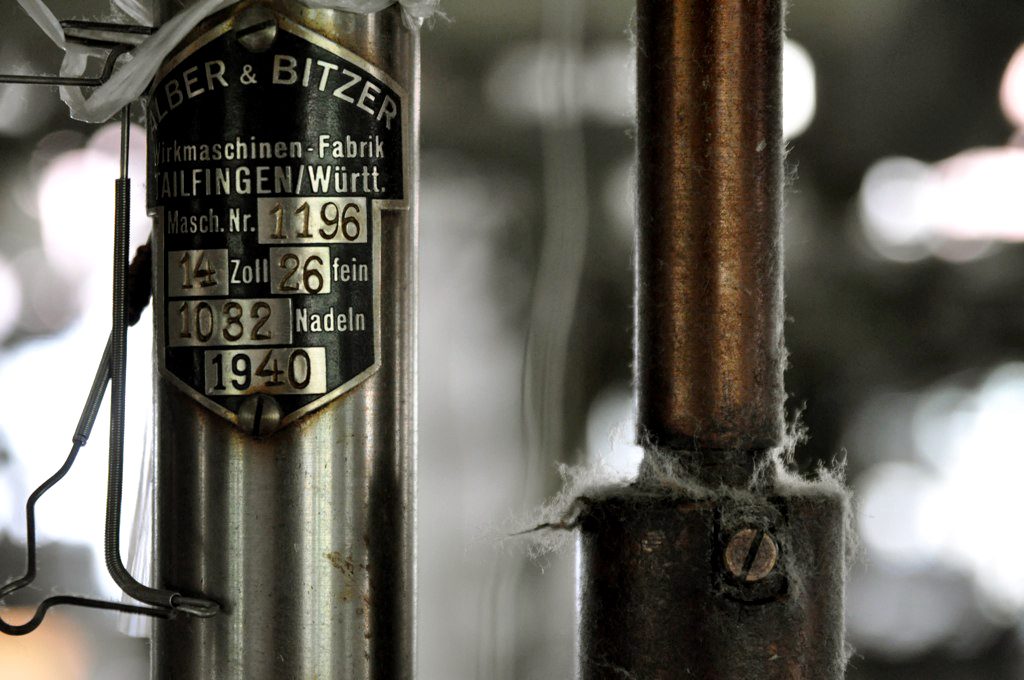
Describe the new Good Basics line for us. What are the differences in manufacturing, fabrics, and design philosophy, and what do you expect to achieve through Good Basics?
G: I visited Portugal often when I was working for other brands and really liked the production and the way it worked. With the loopwheeler’s limited capacity that cannot always meet the market demand, I thought maybe it would be nice to create a second line of production. We have been discussing this change for a long time internally. Finally at one point I saw this copper plate that had a patina; to me, the patina symbolized something that’s evolving and developing – something beautiful that you only get to see when the object gets older.
M: [To add on that] It’s very symbolic because it’s just the way clothing works. The way the material changes with time and has its own ways of becoming unique. It becomes special as time goes on, which is very cohesive and closes the circle – we change our mind and evolve, just like clothing has its own personality and changes over time.
P: The Good Basics line is a more open space for us and we have more possibilities there [in Portugal]. We like to follow the same route we took with Good Originals, but the color and sizing choices are going to be a bit more open. More oversized products can be expected, and you can probably interpret this as being more contemporary. We’ve also decided to have core seasonal colors so that retailers can work with us more easily.
G: We were selective when choosing our production partner in Portugal.Some of the most important features to us are using organic cotton, good manufacturing, and being a family-run business. We talked about our original line being manufactured using loopwheelers, and the factory showed us their old machines from the 60s, 70s, and 80s, which is a nice complement to our overall manufacturing.
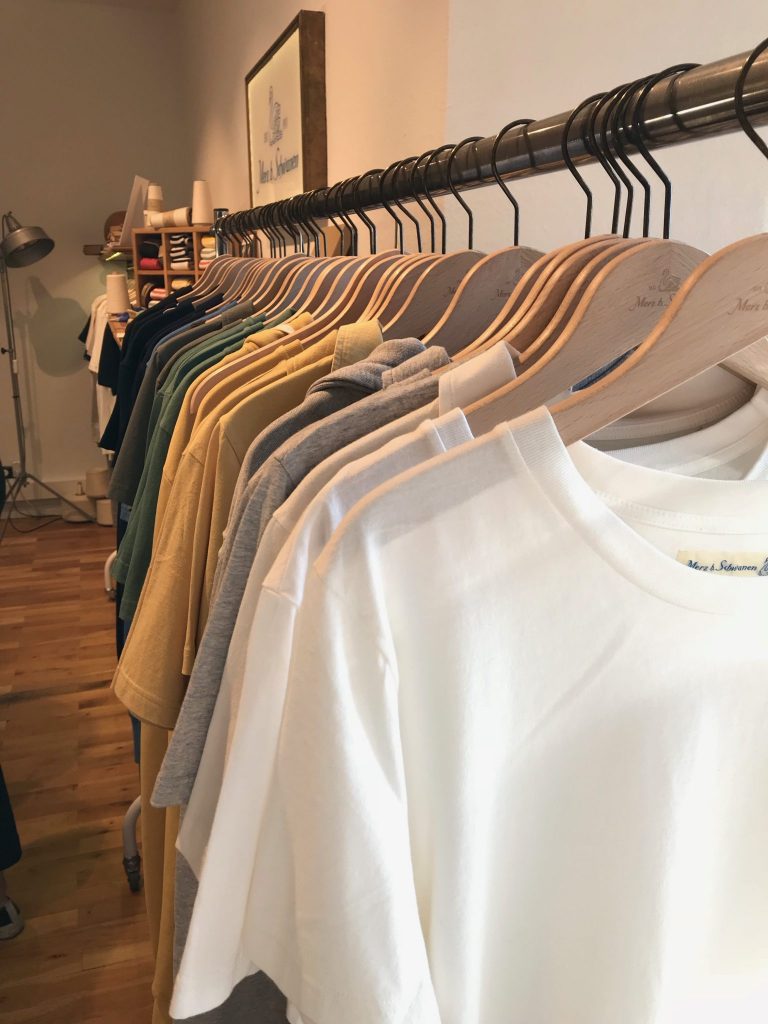
INSPIRATION AND INFLUENCE
How do you find new seasonal colors and tones for the core styles?
G: I would say most of the time it comes from within. We travel a lot and go hiking, cycling, and being close to nature. For the last FW18 color Red Oak, we were hiking in a forest in Canada and when we saw the trees, we both exclaimed simultaneously ”This is going to be our next color!” We realized it is also the same color we have in Autumn here in Berlin. Sometimes it happens like this, but we also take time to observe people on the streets to see if they are looking for more colors or something more settled, what’s the feeling and mood that’s coming up, and if a certain color fits that image. We have a design meeting every Tuesday with the whole team, and we will discuss the new color scheme.
With Merz’s success, have you found other German brands taking inspiration from you?
P: I think we did inspire some companies or brands that are now paying more attention to manufacturing in Germany, but in a way, they are different because they are not looking at making products out of loopwheeler machines.
G: It’s an idea that was probably there already [that things can be made in Germany] waiting to be uncovered. It’s not like we were the first one to actually think about it; it just happened to be us but we are glad to be part of it, but it doesn’t mean that we always have to do everything here in Germany. I think every country is nice, and there is potential for good workmanship and craftsmanship. But it’s nice to see that more brands are willing to make things here in Germany.
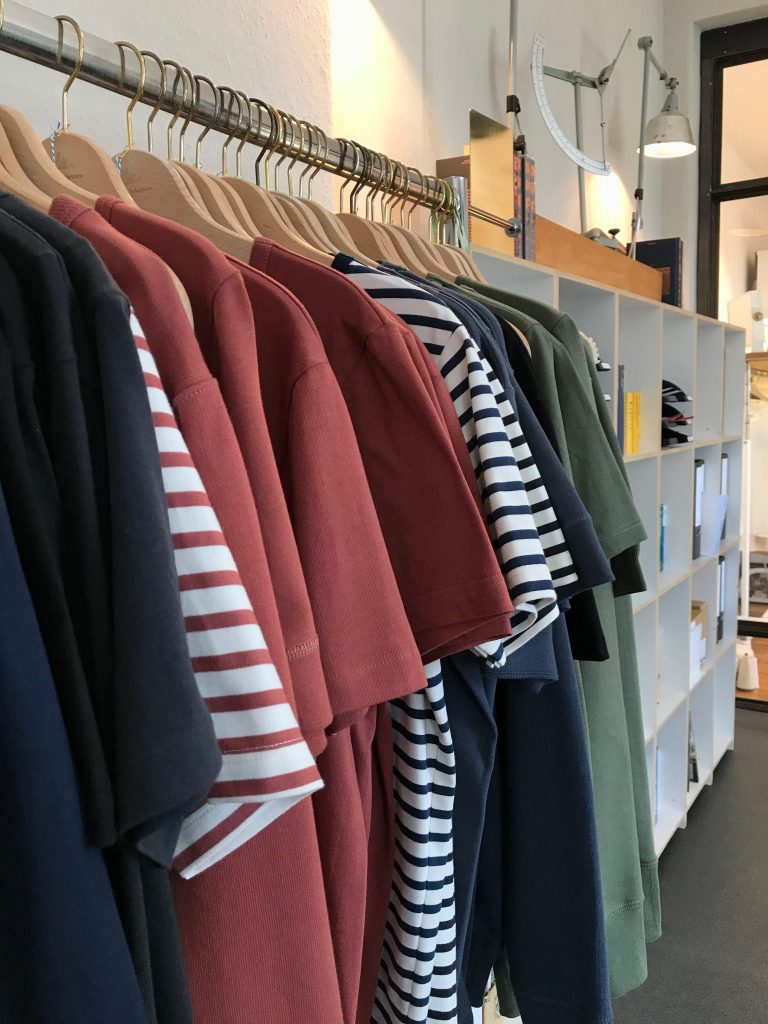
PERSONAL
How is it running the business with your husband/wife as a business partner?
G: It’s super hard (laugh) and takes practice. We’ve been working together for 23 years and it was quite wild at the beginning – throwing books at him – but we learned to handle each other gradually.
P: Sometimes it’s a bit out of control and other team members would just leave the room and leave us alone.
G: It’s nice to have the same vision. Every morning when we are having coffee, we have time to talk about what we want to get done for the day, or talk about where we want to be in one year, and it’s very nice to share ideas and to understand each other. For example, if I am traveling away for production or design, he would never complain because he knows what is going on. The same thing applies when he gets home late from work because I understand there’s something needed to be done, and I’m not complaining about where’s the dinner. We also recognize the importance of giving each other individual time and having different social circles.
P: I think it would be hard if either one of us just treats work as work, while the other is so passionate that he/she is thinking about work all the time. Fortunately, we are both very passionate and sometimes come into the office in the evenings just because we are full of ideas. Passion is the biggest reason for making this desk-to-kitchen relationship work for 23 years, 24/7.
G: It’s probably bothered our son initially as sometimes we would get excited about certain ideas during dinner, and we would be so sorry because we talked business too much. It’s nice that he understands and now he even works here three hours per week.
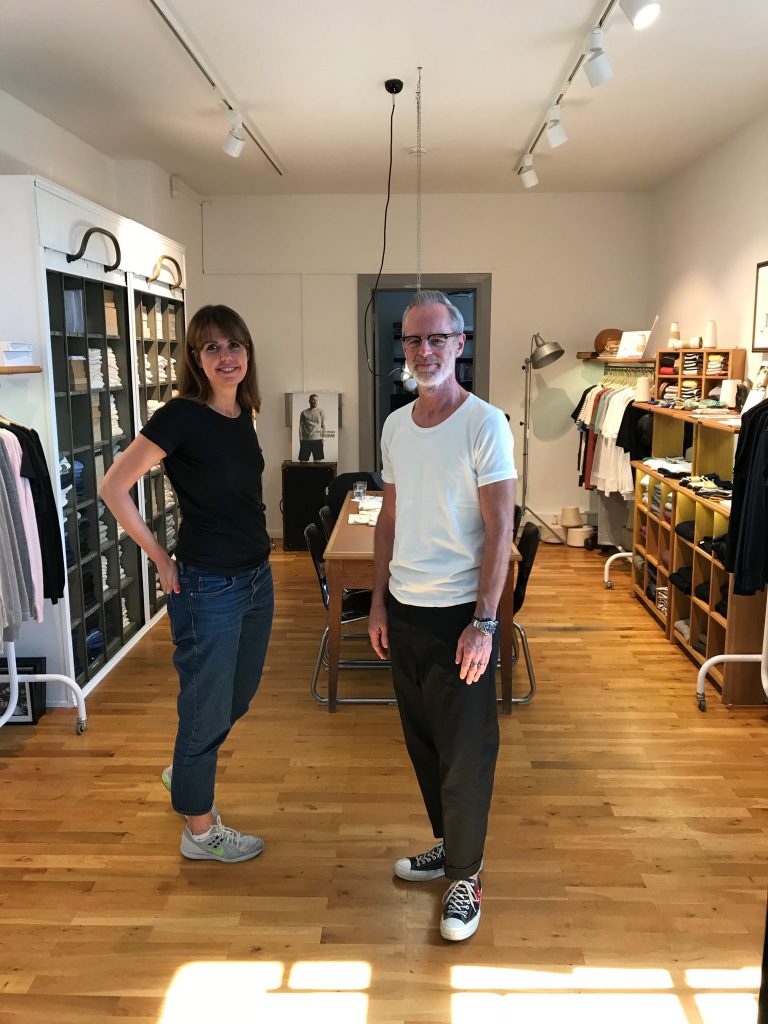
The swan logo of Merz represents energy, pureness, and freedom. What does the swan mean to you and what do you hope it conveys to others?
G: For me, I am always curious about how things come about. It can’t just be a coincidence that there is a swan along with the Schwanen appearing on the logo – it has to have a deeper meaning. So I started to research what is a swan and what it represents. For example, Indians would say butterflies or eagles represent certain phenomenons. I found that swan stands for an end that starts a new beginning. So in a way, it resembles that this company was dead but is now back to life again. It is a symbol of an energy that wants to go on, even if it meets certain obstacles.
What are some local places to visit (good coffee shops/eateries) in Berlin, especially in Mitte where the Merz b. Schwanen office is located?
G: There are two coffee shops that we really love. The one just around the corner is called Father Carpenter. The guy who runs the coffee shop sometimes model for us. He loves Merz b. Schwanen and we think it looks cool on him and because we love his coffee so much we ask if he would love to model for us. The Bonanza Coffee near the Mauerpark Fleamarket is also great. We always ask ourselves in the morning where do we want to get coffee – Father Carpenter or Bonanza? Bonanza has a little more sun so if it’s a sunny day, we like to go to Bonanza.
G: We have this very good but little Italian restaurant down the corner called Muret La Barba, but they do not serve spaghetti and pizza. Instead, they have a daily changing menu. Everything is organic and fresh – just like our shirts, reduced to only the main ingredients that are needed. They have great wine as well as it was originally a wine bar.
G: We also love Clärchens Ballhaus, which is the oldest dancing hall in Berlin. The ballroom is so original, and you’ll have the feeling of walking back in time. There’s a big and incredible chandelier on the second floor, and it remains the same as it was dating back to the World War II era. There’s a beautiful garden and if you go inside you’ll find a wide range of people dancing there – from 15 year old girls, up to one of the most famous dancers who is 90+ years old. The restaurant also offers genuine German food – really good schnitzel, it’s just absolutely wonderful.
P: In terms of clothing, 14 oz has a great selection, including raw denim. I also like Firmament, which is another store that has high streetwear and contemporary collections.
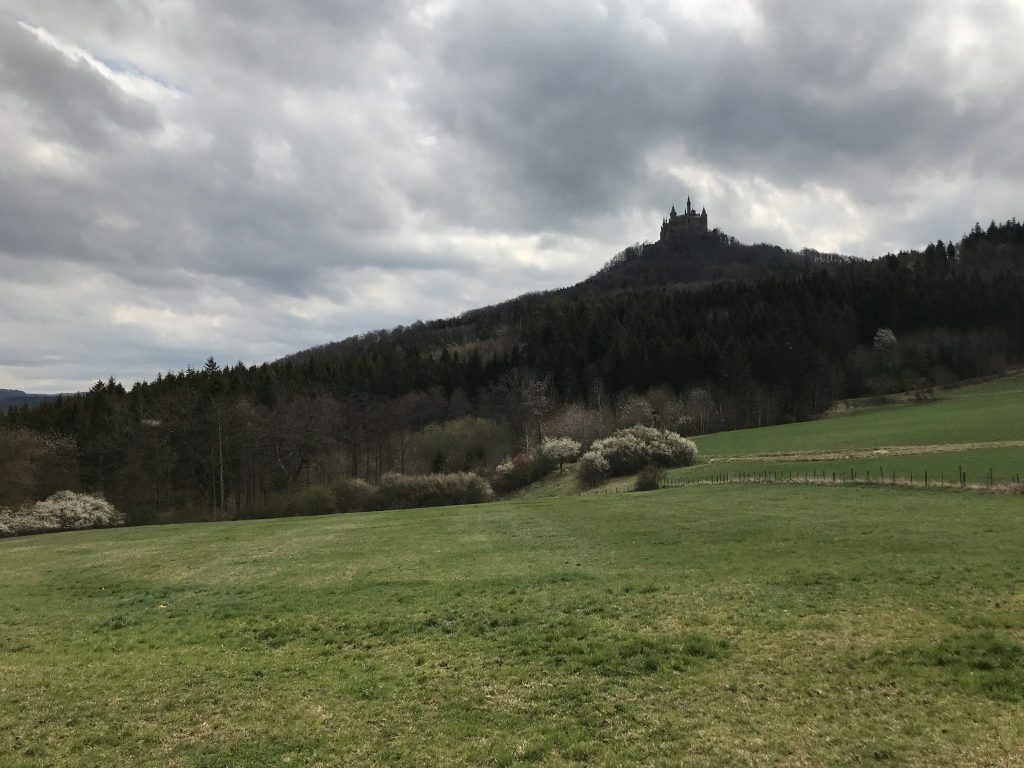
You can find our latest Merz b. Schwanen offerings on the Withered Fig store. For information on sizing for Merz b. Schwanen knits and how they shrink, read our Worn blog post on Sizing and Shrink Tests.
